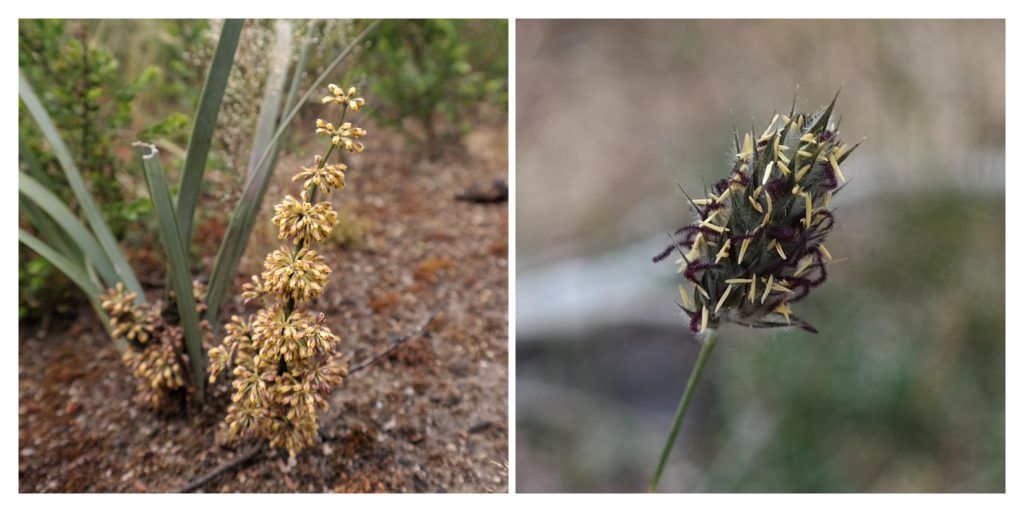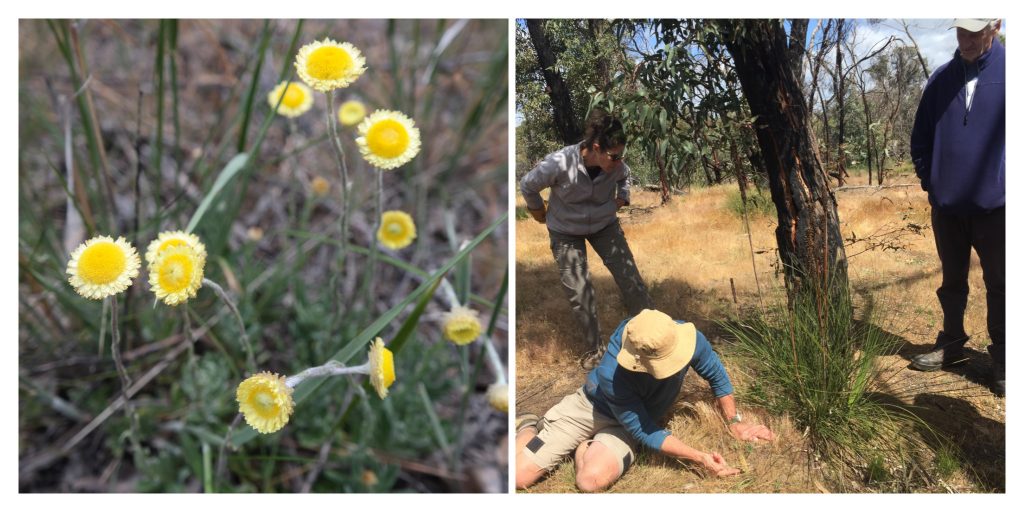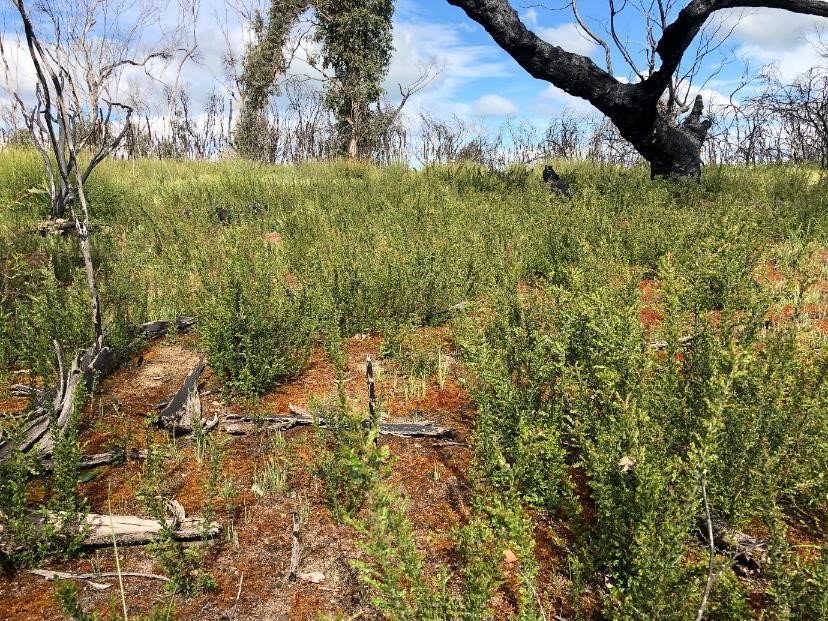Colourful Spring flowering at Balmoral Recreation Reserve
Hayfever aside, the Spring flowering of species in the Grasslands and Grassy Woodlands of south-western Victoria is a sight to behold – especially following good rains.
In early November NGT’s Lauren K., Jonathan and Sheryl joined others for a wildflower walk at the Balmoral Recreation Reserve, just west of Gariwerd … and the Plains Grassy Woodland within the reserve looked pretty good!

Native flora in bloom at Balmoral Recreation Reserve; (left) the Many-flowered Mat-rush (Lomandra multiflora subsp. multiflora) and (right) colourful spikelet of the Foxtail Mulga Grass (Neurachne alopecuroidea). Photos: Lauren Kivisalu
The walk was lead by Dr. John Morgan from LaTrobe University, who has provided the reserve’s Committee of Management (CoM) with much knowledge and advice in managing the woodland community.
During the walk John spoke about the different ways that fire promotes germination for many of the woodland species in different ways (both through the effect of smoke and of heat). Another of the very interesting discussion points was the intricate relationship between native Flax-lillies (Dianella sp.) and species of native bees that work together in ‘buzz pollination’; a specific frequency of vibration caused only by the flight muscles of these particular native bees when close to the Flax-lily flowers, which causes the release of pollen from the enclosed anthers.

(Left) The bright flower heads of the Button Everlasting (Coronidium scorpioides) and (right) Dr. John Morgan showing the diversity of species – big and small – in Xanthorrhoeaceae (grass tree family) at Balmoral Recreation Reserve. Photos: Lauren Kivisalu
NGT also spoke to the group about Hedge Wattle (Acacia paradoxa) control they have been undertaking within the reserve on behalf of the CoM and with the support of the CFA and DELWP. Dense thickets of Hedge Wattle occurred in the reserve as a result of the likely introduction and increase in extent of Hedge Wattle beyond its natural occurrence, and the pattern of disturbances at the site including infrequent fire. The impenetrable and dominant understorey that resulted was not characteristic of the relatively open grassy woodland community, and had started to impact on its condition.
A hot fire that spread through the reserve in late 2017 caused mortality to a fair proportion of the Hedge Wattle and triggered germination and resprouting of many indigenous ground flora; but this also meant a mass germination event of Hedge Wattle from soil-stored seed. The result was very dense seedlings across the burn area, with some areas having over 400 individuals in one square metre!

Dense Hedge Wattle (Acacia seedlings) that have germinated en masse following a 2017 fire at Balmoral Recreation Reserve. Photo: Bryan Haywood
Control of the Hedge Wattle seedlings posed some challenges, needing both an approach that would not impact on the flourishing ground cover and understorey of the woodland, and one efficient enough that it could be applied to the tens of thousands of seedlings across about 1.5 hectares.
A small control trial conducted by NGT was a helpful way of comparing a number of treatment methods; particularly in identifying what wouldn’t be effective. The team is aiming to undertake some further trials of targeted patch burning and devise a strategy to control this area next year; within the critical window of time available before these plants mature. We’ll keep you posted on how it goes!
Thanks to the Balmoral Recreation Reserve CoM, and to Andy Govanstone from the CFA for inviting us along to a great day.
